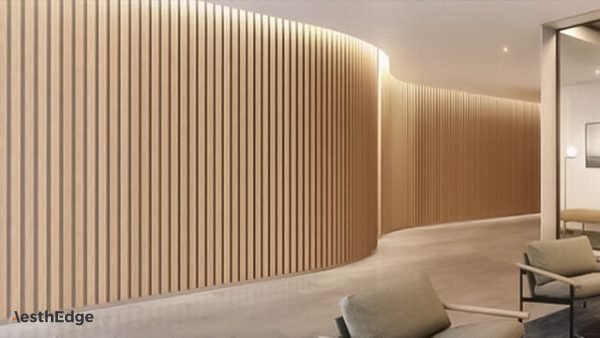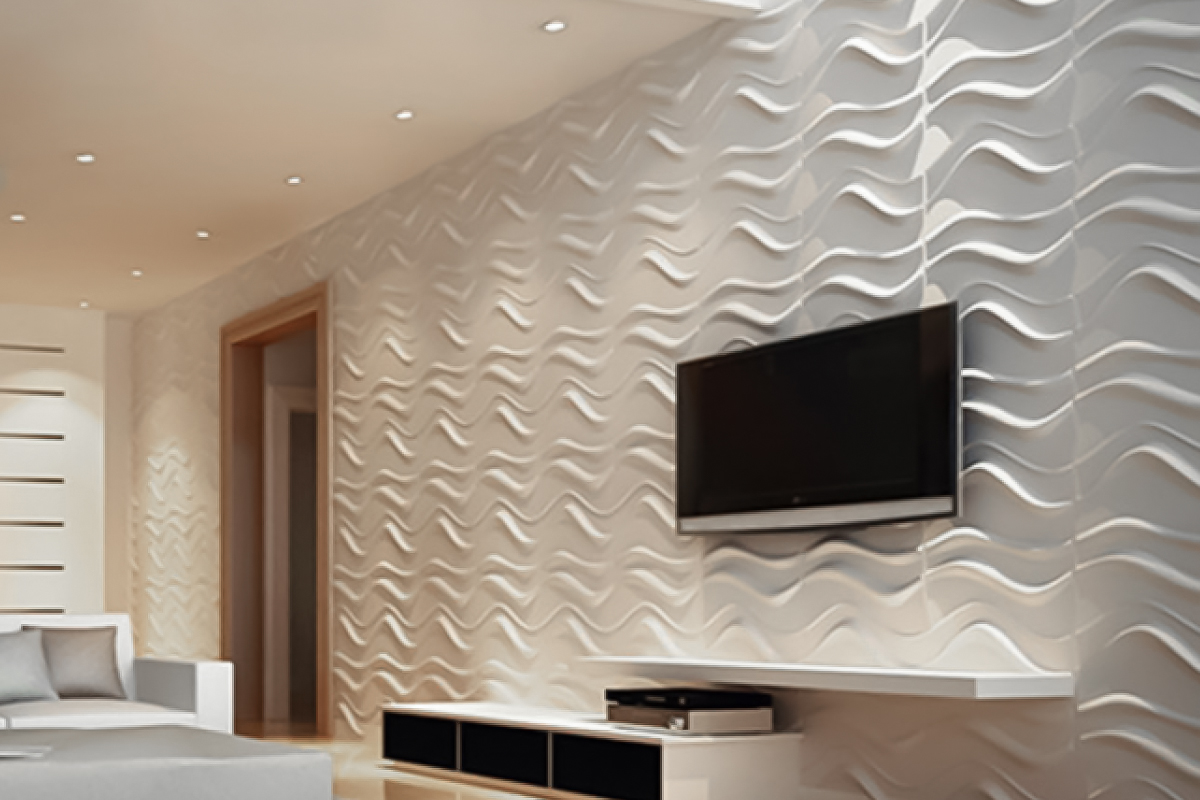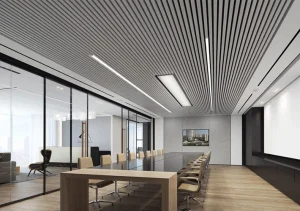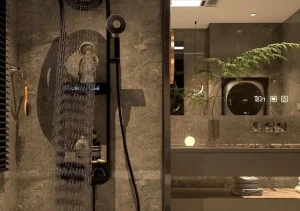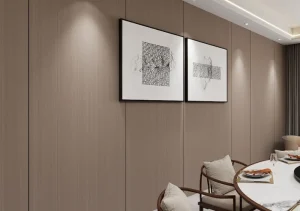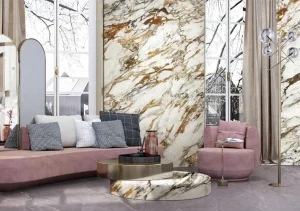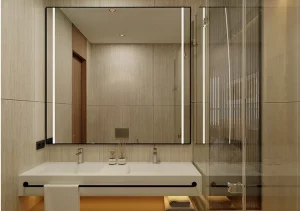3D wall panels have gained significant popularity in modern interior design due to their unique textures and dimensional effects. Unlike traditional flat panels, 3D wall panels offer depth, enhancing spaces by adding visual interest and a sophisticated look. Made from materials like PVC, WPC, bamboo fiber, or gypsum, they are available in various shapes and patterns, catering to diverse styles and aesthetics.
This article explores the various aspects of 3D wall panels, including materials, applications, advantages, installation methods, and maintenance. We’ll also discuss how these panels are transforming spaces in residential and commercial settings.
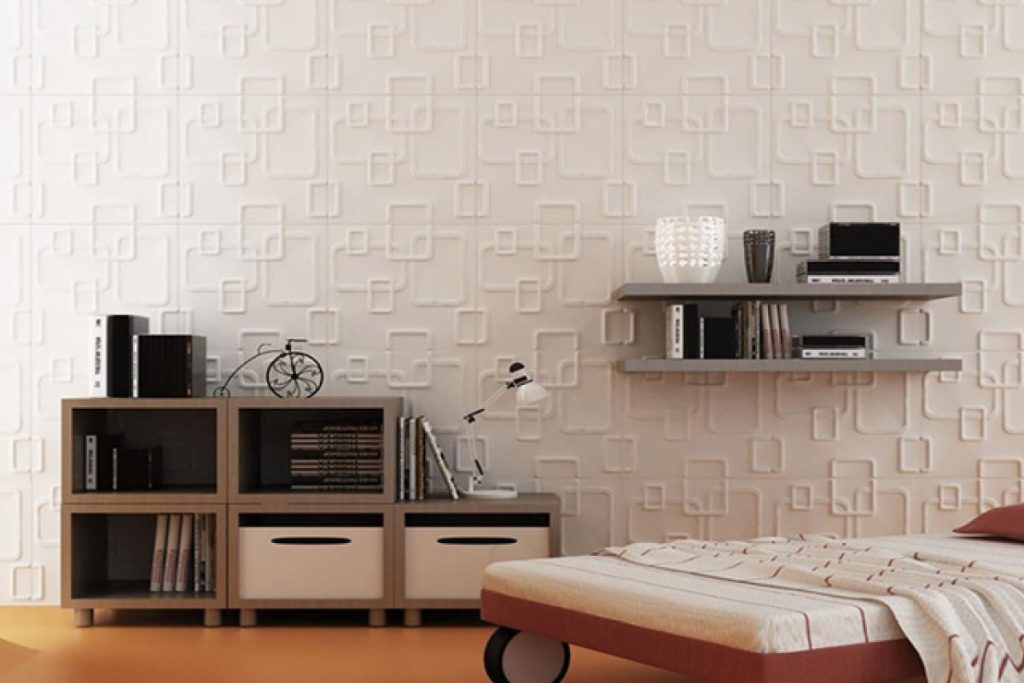
Table of Contents
ToggleMaterials Used in 3D Wall Panels
3D wall panels are crafted from a range of materials, each with its own benefits, including:
- PVC (Polyvinyl Chloride): Known for being lightweight and durable, PVC panels resist moisture and are easy to clean, making them ideal for humid areas.
- WPC (Wood Plastic Composite): Combining wood fibers and plastic, WPC panels offer a natural wood-like appearance but are more durable and resistant to termites, mold, and moisture.
- Gypsum: Often used for its acoustic properties, gypsum 3D panels are commonly installed in offices, theaters, and other spaces where sound absorption is needed.
- Bamboo Fiber: Eco-friendly and sustainable, bamboo fiber panels offer a lightweight yet durable option, ideal for those seeking an environmentally conscious design solution.
Each material brings unique benefits, allowing designers to select the most suitable one based on the project’s requirements and style.
Applications of 3D Wall Panels
1. Residential Spaces
3D wall panels are frequently used in homes to enhance areas like:
- Living Rooms: Panels can be used as feature walls, adding texture and depth. They create a focal point that complements furniture and décor.
- Bedrooms: Adding 3D wall panels behind the bed can replace traditional headboards, bringing a modern look and a touch of luxury.
- Bathrooms: Moisture-resistant materials like PVC are ideal for bathrooms, transforming plain walls into stylish designs while ensuring durability.
2. Commercial Spaces
In commercial settings, 3D wall panels bring an innovative and professional aesthetic:
- Offices: 3D wall panels can help create a motivating and visually pleasing workspace, enhancing corporate branding.
- Retail Stores: Customizable and dynamic, 3D wall panels attract customers by making store walls more engaging and brand-centered.
- Restaurants and Hotels: These panels add warmth and character to spaces, from lobbies to dining areas, contributing to a memorable guest experience.
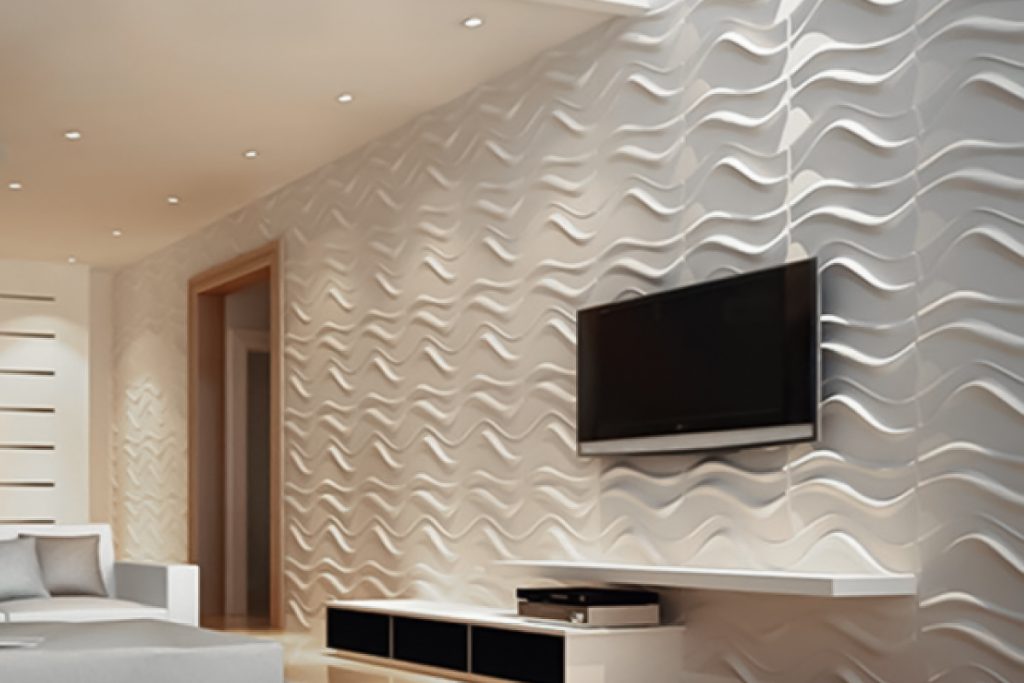
Advantages of 3D Wall Panels
1. Aesthetic Appeal
The unique textures and patterns of 3D wall panels add sophistication, creating a space that feels both modern and stylish. Their ability to replicate materials like stone or wood allows designers to achieve high-end looks without the high costs.
2. Durability
Materials like WPC and PVC ensure that 3D wall panels are highly resistant to wear, moisture, and insects. They maintain their appearance over time, even in challenging conditions, making them a long-lasting choice.
3. Easy Installation
3D wall panels can be installed quickly with minimal disruption, making them suitable for renovation projects. They often come in interlocking designs, allowing DIY installations with basic tools.
4. Sound Insulation
Certain 3D wall panels, especially those made of gypsum or wood fiber, offer sound-absorbing qualities. This makes them ideal for rooms where reducing noise is essential, such as offices, theaters, and studios.
5. Eco-Friendly Options
With sustainable materials like bamboo fiber and recyclable PVC, 3D wall panels can contribute to eco-friendly building initiatives, appealing to environmentally conscious clients.
Installation Methods
There are several installation methods for 3D wall panels, allowing flexibility depending on the material and project needs:
- Adhesive Method: Lightweight panels, like those made of PVC or bamboo, can be affixed using strong adhesives directly onto the wall surface.
- Screw Installation: For heavier materials like gypsum or WPC, screws are preferred to ensure stability, especially in high-traffic areas.
- Interlocking Systems: Many 3D wall panels feature interlocking edges, allowing for easy, seamless installations without visible gaps.
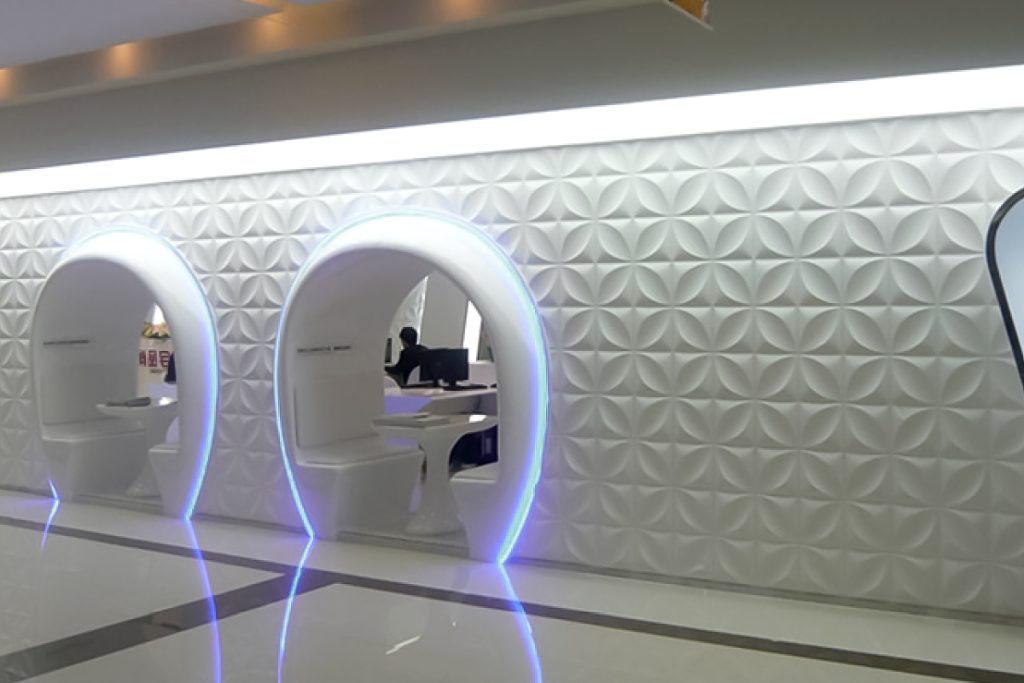
Maintenance of 3D Wall Panels
Maintaining 3D wall panels depends on the material. Here are general guidelines:
- PVC Panels: These panels can be easily cleaned with a damp cloth, as they resist moisture and dirt buildup.
- WPC Panels: Routine dusting or wiping with a mild cleaner keeps them looking fresh.
- Gypsum Panels: Dusting with a dry cloth is recommended, avoiding water to prevent potential damage.
- Bamboo Fiber Panels: These panels can be wiped with a soft, damp cloth. Avoid harsh chemicals to preserve the natural look.
Trends and Future of 3D Wall Panels
With advancements in design technology, the market for 3D wall panels is expanding rapidly. Innovations in material science have led to more lightweight, durable, and eco-friendly options, while customization has allowed for highly unique patterns and finishes. In the future, we can expect 3D wall panels to incorporate smart technology, enhancing functionality and user experience in new and exciting ways.
Conclusion
3D wall panels are revolutionizing interior design by adding depth, elegance, and functionality to spaces. With a wide range of materials and applications, they cater to various design requirements, from residential homes to commercial establishments. As they continue to evolve, 3D wall panels will remain a top choice for creating dynamic, modern interiors that stand out in any setting.
Aesthedge®Walls has 13 years of production experience. China’s top production factory. If you want to know more product information, you can contact us at any time!

